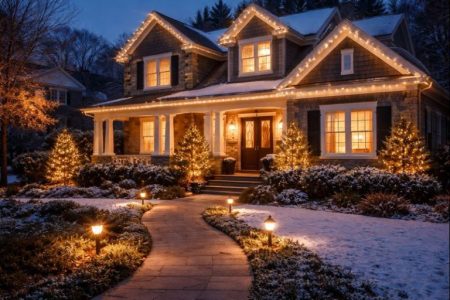Your home is more than just four walls; it’s a haven, a place where memories are made, and laughter echoes through the rooms. One crucial yet often overlooked part of your home is the roof. It’s your shield against the elements, providing protection and security. In this guide, we’ll delve into the art of preventative roof care, ensuring your home remains a sanctuary for years to come.
The Basics: Understanding Your Roof
Let’s start with the basics. Your roof, much like a sturdy hat, shields your home from rain, snow, and the blazing sun. It’s a complex system, with shingles, flashing, and a supporting structure working together. To keep it in top shape, you need to understand its components and their functions.
1. Inspect Regularly, Act Swiftly
Regular roof inspections are the cornerstone of preventative care. Grab a pair of binoculars and survey your roof from the ground. Look for missing or damaged shingles, signs of water damage, or any debris that may have accumulated. Schedule a professional free roof inspection at least once a year to catch issues before they escalate.
2. Clear the Decks: Remove Debris
Leaves, twigs, and other debris can accumulate on your roof, clogging gutters and causing water damage. Make it a habit to clear these off regularly. It’s a small task that pays big dividends in preventing issues down the line.
DIY Roof Maintenance: A Labor of Love
Now that you’ve got the basics down, let’s dive into some hands-on preventative maintenance that any homeowner can tackle.
3. Gutter Check-Up
Gutters are your roof’s drainage system, directing rainwater away from your home. Ensure they are free of debris and securely attached. A simple, regular cleaning can prevent water from seeping into your walls and foundation.
4. Trim Those Overhanging Branches
If you have trees around your home, ensure that overhanging branches are trimmed. Not only will this prevent leaves from piling up, but it also reduces the risk of branches falling during a storm and damaging your roof.
5. Sunshine and Shingles
Inspect your shingles for signs of wear and tear. Sunlight, over time, can cause shingles to become brittle. Replace any damaged or missing shingles promptly to keep your roof’s integrity intact.
Professional Touch: When to Call in the Pros
While there’s much you can do on your own, some tasks require the skilled hands of a professional.
6. Flashing the Right Way
Flashing, the material that seals joints and seams on your roof, can degrade over time. If you notice loose or damaged flashing during your inspections, it’s time to call in a professional roofer to repair or replace it.
7. The Power of a Professional Inspection
DIY inspections are fantastic for regular maintenance, but having a professional inspect your roof ensures that no issues are overlooked. Think of it as a thorough check-up for your home’s crown.
Weathering the Storm: Preparing for Extreme Conditions
Weather can be unpredictable, and your roof bears the brunt of it all. Take these steps to prepare your roof for whatever Mother Nature throws its way.
8. Brace for Impact: Hail and Storm Protection
Invest in impact-resistant shingles, especially if you live in an area prone to hail or severe storms. These shingles provide an extra layer of defense against nature’s fury.
9. Snow Business: Dealing with Winter Woes
If you live in a snowy region, consider installing snow guards on your roof. These devices help prevent snow and ice from sliding off in large chunks, protecting both your roof and anything (or anyone) below.
Rain or Shine: Sustainable Roofing Practices
As we navigate the world of preventative roof care, it’s essential to consider sustainable practices. In an era where environmental consciousness is key, let’s explore how you can maintain your roof while minimizing your ecological footprint.
Eco-Friendly Roofing Materials
10. Green Choices: Opt for Sustainable Materials
When it comes time to replace your roof or install a new one, consider environmentally friendly materials. Options like recycled metal, solar shingles, or cool roofs (reflective materials that reduce heat absorption) not only protect your home but also contribute to a greener planet.
Water Wisdom: Harvesting Rain
11. Harvest the Rain: Install a Rainwater Harvesting System
Turn rain into a resource by installing a rainwater harvesting system. Collecting rainwater not only benefits the environment but also provides a sustainable water source for your garden or household needs.
The Power of Insulation
12. Seal the Deal: Invest in Proper Insulation
A well-insulated roof not only regulates your home’s temperature but also reduces energy consumption. Proper insulation can extend the life of your roof by preventing ice dams and minimizing stress from temperature fluctuations.
Aesthetic Appeal: Green Roofing
13. A Touch of Nature: Consider a Green Roof
Add a touch of nature to your home with a green roof. These living roofs, covered in vegetation, not only absorb rainwater and provide insulation but also contribute to biodiversity in urban areas.
Community Matters: Local Roofing Professionals
14. Support Local: Choose Local Roofing Professionals
When it comes to roof repairs or installations, supporting local businesses not only boosts your community but also reduces the environmental impact of transportation. Local professionals are invested in the area, providing personalized care for your home.
Going the Extra Mile: Solar Solutions
15. Chase the Sun: Embrace Solar Solutions
Consider incorporating solar panels into your roof design. Not only do solar panels harness renewable energy, but they also offer long-term cost savings and reduce your reliance on traditional power sources.
Wrapping It Up: The Longevity of Your Roof
Your roof is a vital component of your home’s longevity. With a combination of regular inspections, DIY maintenance, and professional care, you can ensure it stands strong against the tests of time and weather. Remember, preventative roof care is an investment in the well-being of your home. By taking the time to understand and maintain this essential part of your dwelling, you’re not just preserving a structure; you’re safeguarding the countless moments and memories that make your house a home.






